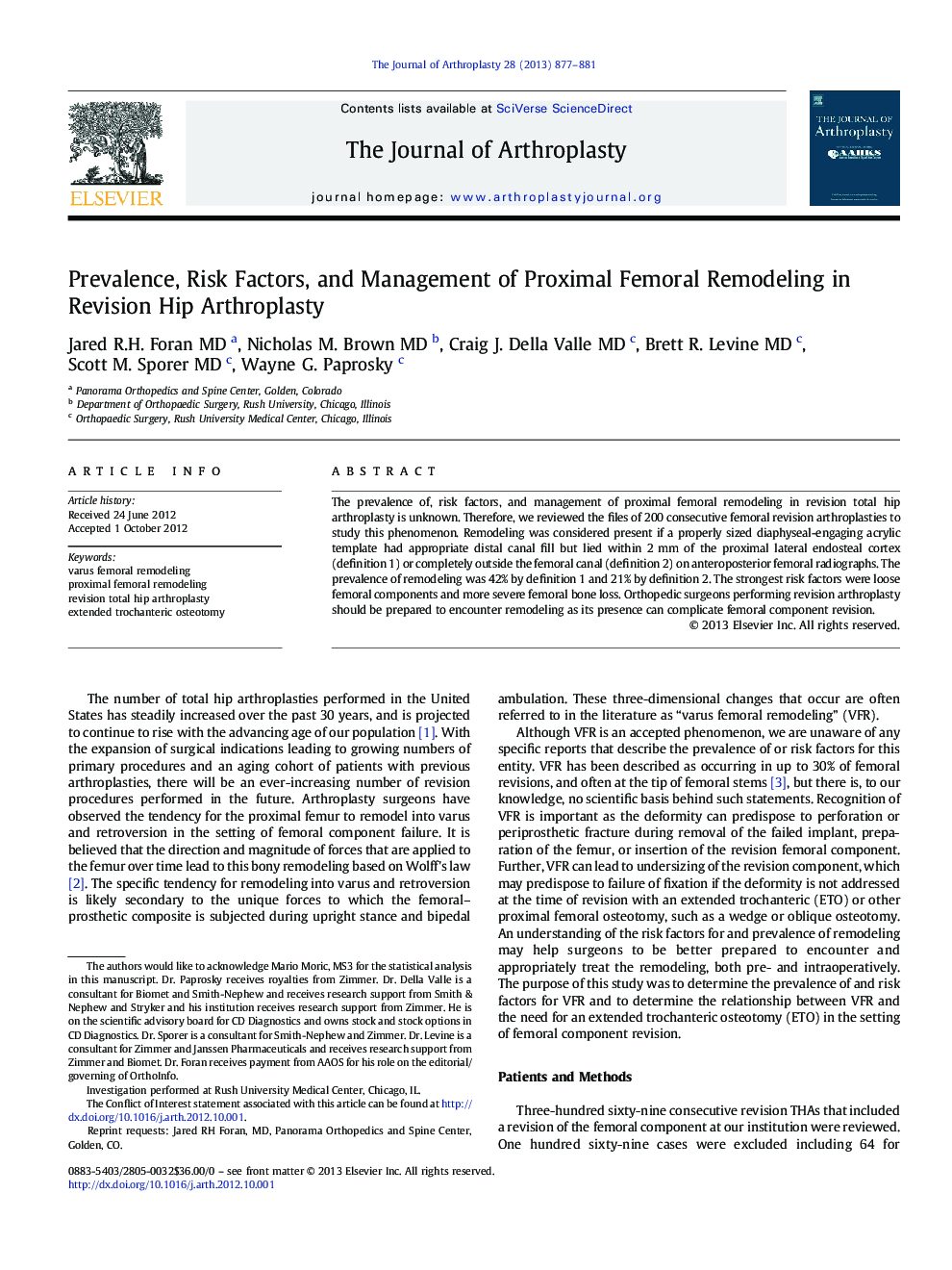| Article ID | Journal | Published Year | Pages | File Type |
|---|---|---|---|---|
| 4061556 | The Journal of Arthroplasty | 2013 | 5 Pages |
The prevalence of, risk factors, and management of proximal femoral remodeling in revision total hip arthroplasty is unknown. Therefore, we reviewed the files of 200 consecutive femoral revision arthroplasties to study this phenomenon. Remodeling was considered present if a properly sized diaphyseal-engaging acrylic template had appropriate distal canal fill but lied within 2 mm of the proximal lateral endosteal cortex (definition 1) or completely outside the femoral canal (definition 2) on anteroposterior femoral radiographs. The prevalence of remodeling was 42% by definition 1 and 21% by definition 2. The strongest risk factors were loose femoral components and more severe femoral bone loss. Orthopedic surgeons performing revision arthroplasty should be prepared to encounter remodeling as its presence can complicate femoral component revision.
